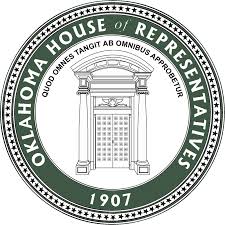House Approves FY22 Budget Bill
Mike Seals - May 18, 2021 10:42 pm

OKLAHOMA CITY (5-18-2021) – The House today passed the appropriations bill to fund state government services for Fiscal Year 2022, which starts in July.
“This is the most comprehensive budget I have seen in my tenure,” said House Appropriations and Budget Chair Kevin Wallace, R-Wellston. “It funds core services across the spectrum, and it gives parents, teachers and students everything they need for success in education.”
A&B Vice Chair Kyle Hilbert added, “This budget provides tax relief to individuals and businesses, makes targeted and historic investments in education, includes money for economic development, health care and infrastructure, and it leaves the state with the highest reserve balance in state history.”
House Bill 2900 passed the House with a vote of 82-19. It now moves to the state Senate.
Bills that specify spending limits for various state agencies also are still pending final passage.
This budget appropriates $8.8 billion for Fiscal Year 2022, which starts in July. This compares to $7.7 billion appropriated for FY21 – a 14.3% increase.
This budget increases common education funding by more than $210 million to a historic high of $3.2 billion. This will allow the reduction of classroom sizes in kindergarten and first grade, which is expected to lead to greater academic success for students throughout the remainder of their school years.
Also included in the budget is a $27 million increase for textbooks and increased money for the school activity fund. In addition to this budget are bills that would create funding equity for school districts with low property tax bases and increase per-pupil funding by getting rid of duplicate student counts in the school funding formula.
With this budget, Republicans have increased education funding by $776 million over five years. Schools also are receiving billions of dollars in federal pandemic relief funds.
The budget also fully funds the state’s Medicaid expansion, approved by voters last year. It also restores a historic sales tax credit allowing the University of Oklahoma Health Sciences Center to train 160 additional nursing graduates and nurse practitioners annually and 70 additional medical residents within three years.
Transportation funding increases with almost a $17 million increase in appropriations and a $200 million dollar investment in speeding up the 8-year plan through the federal TIFIA program. When the pandemic started, funds were set aside from the Oklahoma Department of Transportations’ ROADS fund to be used for other core functions of government as needed. This budget restores that money, making the ROADS Fund whole. The Country Improvement for Roads and Bridges fund is likewise made whole with a $20 million increased appropriation.
Wallace said it’s important to note that the Department of Transportation agreed to allow the Legislature to add an authorization section in the General Appropriations bill for the ROADS fund of $575 million.
“I’m grateful to transportation for setting the bar in helping us correct this,” Wallace said. “I’d like to see other agencies and funds follow suit. I would encourage all apportionments to instead be authorized sections in the General Appropriations bill to increase general transparency in the budget.”
This budget reduces personal income tax by .25% for all taxpayers and restores the Earned Income Tax Credit for low- to moderate income families and workers. It reduces corporate income tax from 6% to 4% to help the state recruit new businesses, create jobs and guard against federal tax increases under the current administration. Oklahoma is now in the Top Ten for lowest corporate and personal income taxes in states levying those taxes.
In addition, this budget allocates $42 million to expand broadband services to areas of the state that don’t currently have access to high-speed internet. This will help all Oklahomans connect to education, health care and other services, and it will help attract business to rural areas, Wallace said.
The Rural Economic Action Plan (REAP) will receive $15.5 million under this plan as well. REAP grants are made available to rural communities throughout the state to help with projects that otherwise would go unfunded. Projects can include road repairs, equipment purchases, utility infrastructure, and much more.
The budget also includes several economic boosters, including $35 million to recruit new jobs to the state.
On a final note, this budget brings the state’s savings accounts back to almost $1.3 billion for FY22. This is the largest savings in state history. Wallace said the pandemic showed how incredibly important it is to have healthy reserves in case of a downturn.



